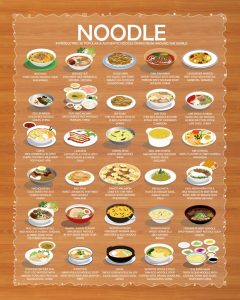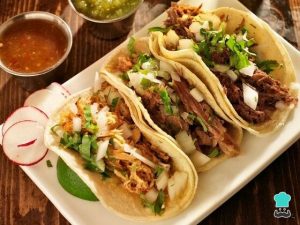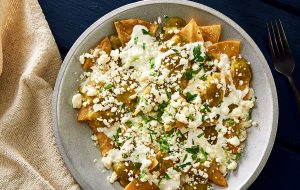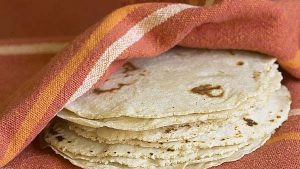Cultural significance can be found in noodles from around the world in different shapes, forms, and sizes. From cultural traditions in China such as the Long Life Noodle to the historical references in Italy such as the Regine pasta, the noodle has extended its reach across many continents and countries forming deep roots in many of these cultures. Without a doubt, the noodle has successfully managed to form intimate relationships with Japan’s culture and history as well. One bond can be analyzed through a specific form of noodle dish, the ramen. When a person thinks about ramen, one cannot prevent but to associate this dish with Japan as well. Ramen has come to be identified with Japan’s culture the most. Ramen has a long history in Japan, changing as the state of the country changed as well. This essay seeks to analyze how the ramen transformed into a staple dish in Japan’s culture and the history behind the transformation.
To begin with, the origin of the first ramen is unknown, but a fact is that ramen came from an immigrant dish borrowed from China. Myths and mystery cloud the origin of the ramen and its boom. Academic historian and author George Solt presents three origin myths about ramen in his book The Untold History of Ramen: How Political Crisis in Japan Spawned a Global Food Craze. The first myth establishes Shu Shunsui, a scholar from China, as the one who brought the ramen recipe to Japan. Shu Shunsui was a Chinese refugee of the Ming government who came to serve as an advisor to the Japanese feudal lord Tokugawa Mitsukuni. Historical records state that Shu Shunsui adviced Mitsukini on what to add to his udon soup to make it taste better. This dish is rumored to be the first ramen ever made and established Tokugawa Mitsukini as the first person to eat ramen in Japan. While it is true that Chinese culture heavily influenced Japanese culture at the time, a historical record of Mitsukini cooking ramen does not exist.
The next myth connects the origin of ramen to Japan opening its ports to the outside world. Japan’s ports attracted Chinese travelers, and a Chinese noodle soup called laa-mein was brought into Japan. This dish serves as a potential predecessor to the ramen today although laa-mein did not have any toppings and was not a meal in itself much unlike the modern ramen.
The last and most plausible theory associates the origin of the ramen to a shop called Rai Rai Ken in Tokyo during the 1900s. Rai Rai Ken employed Chinese workers and served a noodle dish called Shina Soba. Shina Soba incorporated ingredients that resembles todays ramen such as roasted pork, Japanese fish cake, and nori seaweed into one dish. Interestingly, Japan was becoming industrialized and more urbanized during this time period. Japan’s industrialization and urbanization helped to popularize ramen. Shina soba was cheap and filling, providing plenty of calories for Japanese urban workers. In addition, mechanical noodle-making machines were in general use by this time. These machines shortened the time to prepare the noodles. All of these conditions made ramen the perfect food to eat. It was the right food at the right time. Ramen became integrated into Japanese modern urban life making it’s first deep roots in Japanese culture and history.
Although ramen was engraved deeply in urban life during the early 1900s, ramen almost disappeared during world war 2. Rationing in Japan during world war 2 did not allow ramen to be consumed or sold as it was seen as a luxury for eating out. Food shortages and famines made the government place heavy regulations on food supplies, and profits on selling food was prohibited. This time period was one of the worst period of hunger in Japan’s history. Unavoidably, black market food stands sprang up even after the war ended, although it was still illegal. This was due to the United States continuing food rationing during their time of occupation in Japan. Unemployed workers who tried to sell ramen could potentially and did go to jail. During this time of famine and hunger, ramen came to represent an opposite view of what it represents today. It was seen as a symbol of a time of need and the basic necessities of life. One could not afford to eat luxurious foods such as ramen.
Following world war 2, Japan underwent a prosperous economic boom. This period of rapid economic growth and development contributed to the revitalization of the ramen. The numerous construction projects required huge numbers of construction workers. Construction workers consumed large quantities of bowls of ramen. Ramen contained many healthy ingredients that would provide sufficient energy to keep the workers properly fed and energized. Many restaurants that specialized only in ramen became increasingly popular in Japan. Ramen once again became a staple dish in the rapid growing country that Japan has become.
In addition, a new form of ramen emerged following world war 2. Momofuku Ando surveyed the devasting aftereffects of the war. Many people suffered from hunger, and it was an issue he determined to be the biggest problem in Japan. He was inspired to create a food that would end the hunger in his country. He set out to make a food that would be nonperishable, economical, fast and easy to make. Already having witnessed the success of the ramen in the past, Ando aimed to create a ramen of his own. The end result was instant ramen! Instant ramen was a success as people could now enjoy delicious ramen at their own homes for a relatively cheap price. Ando set on his goal to end hunger with ramen!
Today ramen has become a symbol and historical figure of Japanese culture and history. Ramen has extended it’s reach globally around the world. Traditional ramen remains integral in Japanese culture but more shops in prominent cities in the United States that specialize in ramen have opened up. Nonetheless it its still hard to get authentic Japanese ramen unless one is near the large diverse cities. On the other hand, instant noodles have become available almost everywhere in the world. They can be found at almost any supermarket store. Instant noodles are especially prominent among college students since it is cheap and affordable to get. Although ramen has now become a global trend, its deep roots will always be attached to Japan’s history. Ramen has come to be what it is today thanks to the historical events that have occurred in Japan, and the people inspired by those events.


 Tacos de Lengua
Tacos de Lengua Chilaquiles
Chilaquiles Tortillas!
Tortillas!